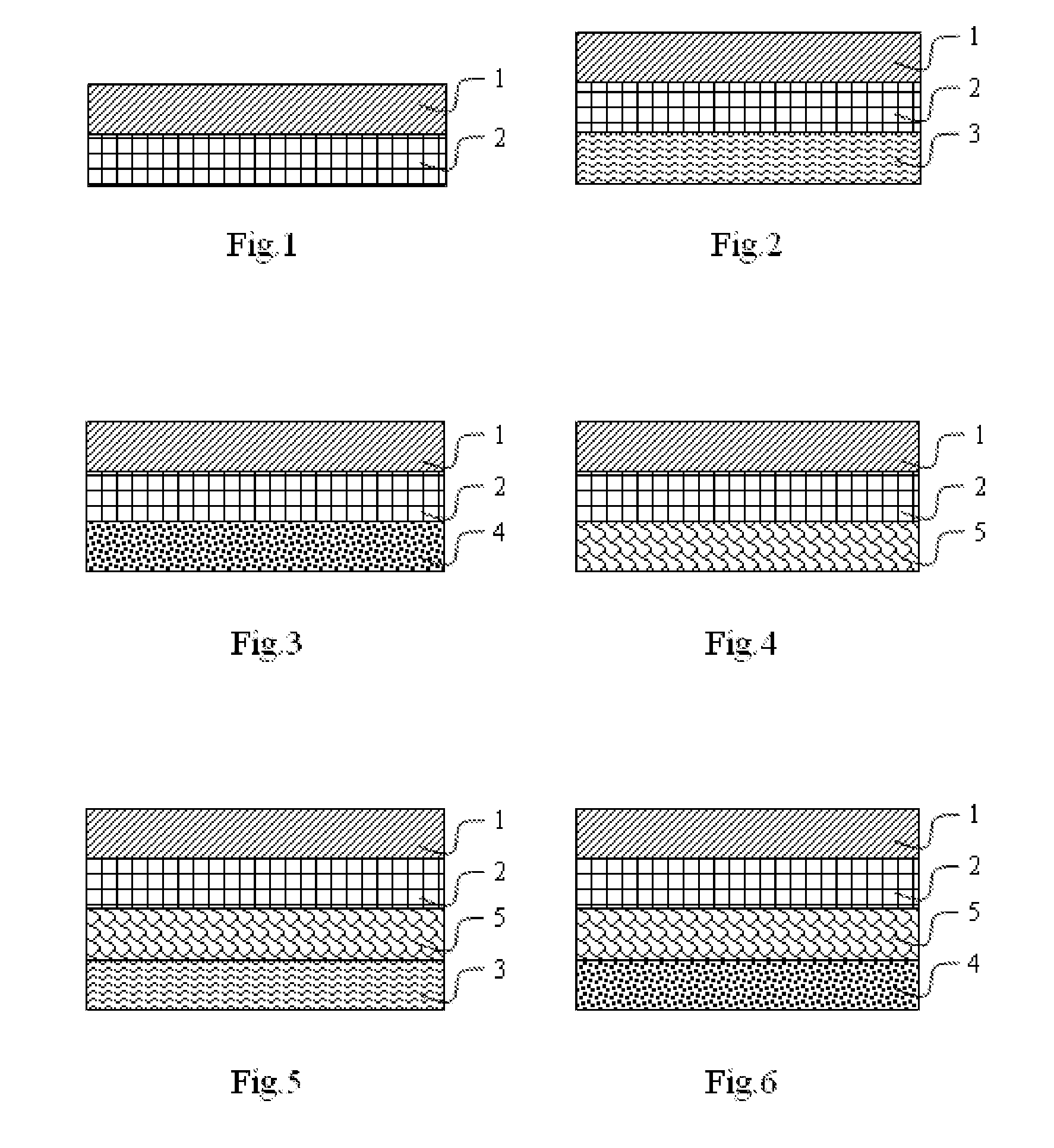Flame Retardant Multi-Layer Label
- Summary
- Abstract
- Description
- Claims
- Application Information
AI Technical Summary
Benefits of technology
Problems solved by technology
Method used
Image
Examples
example 1
[0083]Labels of the structure as shown in FIG. 1 were prepared by roll-coating a topcoat layer solution on a first surface of a backing film, and then drying at 150° C. for 2 minutes to form a topcoat layer on the first surface of the backing film.
[0084]Twelve labels were obtained by using six backing films and two topcoat layer solutions 1 and 2 according to the above process. The six backing films were PI, PEI, FR-PC, FR-PET, Al, PVF. Two topcoat layer solutions 1 and 2 were prepared as follows. The topcoat layer solution 1 was used to form a topcoat layer without flame retardant (Non-FR topcoat), and the topcoat layer solution 2 was used to form a topcoat layer with flame retardant (FR topcoat).
[0085]Preparation of the topcoat layer solution 1: In a high shear mixer (Cowles™) 40 g of phenoxy resin (Inchem PKHH) and 60 g of polyurethane resin (Lubrizol Estane 5703) were dissolved in 450 mL of cyclohexanone at room temperature, and 80 g of titanium dioxide (Dupont Ti-Pure R-900) as...
example 2
[0089]Labels of the structure as shown in FIG. 2 were prepared by roll-coating a topcoat layer solution on a first surface of a backing film, drying at 150° C. for 2 minutes to form a topcoat layer on the first surface of the backing film, then roll-coating an adhesive layer solution on a second surface of the backing film, and drying at 90° C. for 4 minutes to form an adhesive layer on the second surface of the backing film.
[0090]Twelve labels were obtained according to the above process by using the six backing films and the two topcoat layer solutions 1 and 2 as described in Example 1, and an acrylic adhesive (National starch, Durotak 180-129A) to form the adhesive layer without flame retardant (non-FR adhesive layer). The obtained labels were tested according to UL94 VTM-0 standard, and the results were shown in Table 2.
TABLE 2Flame retardancy performance of labels with non-FR adhesive layerBacking filmTopcoat layerAdhesiveFlame retardancyThicknesstopcoatThicknesslayerperformanc...
example 3
[0092]The same materials and process as described in Example 2 were used, and labels with typical topcoat layer thickness (18 μm), non-FR adhesive layer thickness (20 μm) and varying PI backing film thickness were prepared accordingly. The flame retardancy performances of the obtained labels were shown in Table 3.
TABLE 3Effects of backing film thickness on flame retardancy performancePI thickness (μm)Non-FR topcoatFR topcoat12Complete burning8-10 s 20Complete burning6-8 s25Complete burning6-8 s1252-4 s0-2 s
[0093]From Table 3, as for PI backing film, the thicker the backing film, the better the flame retardancy. Usually, backing film thickness can range from 12 to 125 μm. Film with too low thickness can easily break under tension and curl easily due to electrostatic attraction. Meanwhile, film with too high thickness is hard to wrap around a battery and has cost issue. Since PI with 25 μm thickness has higher mechanical stability than thinner ones and has better conformability to wra...
PUM
| Property | Measurement | Unit |
|---|---|---|
| Fraction | aaaaa | aaaaa |
| Fraction | aaaaa | aaaaa |
| Fraction | aaaaa | aaaaa |
Abstract
Description
Claims
Application Information
 Login to View More
Login to View More - Generate Ideas
- Intellectual Property
- Life Sciences
- Materials
- Tech Scout
- Unparalleled Data Quality
- Higher Quality Content
- 60% Fewer Hallucinations
Browse by: Latest US Patents, China's latest patents, Technical Efficacy Thesaurus, Application Domain, Technology Topic, Popular Technical Reports.
© 2025 PatSnap. All rights reserved.Legal|Privacy policy|Modern Slavery Act Transparency Statement|Sitemap|About US| Contact US: help@patsnap.com


